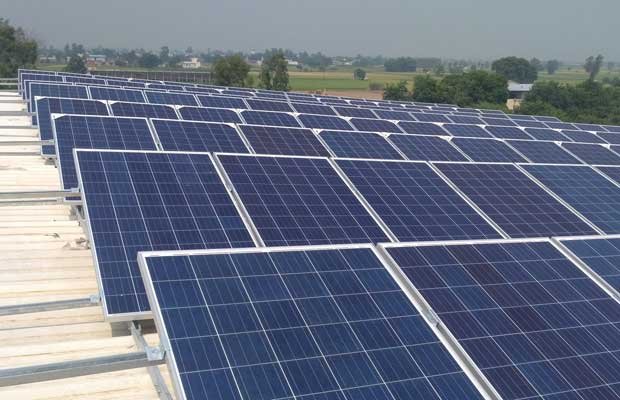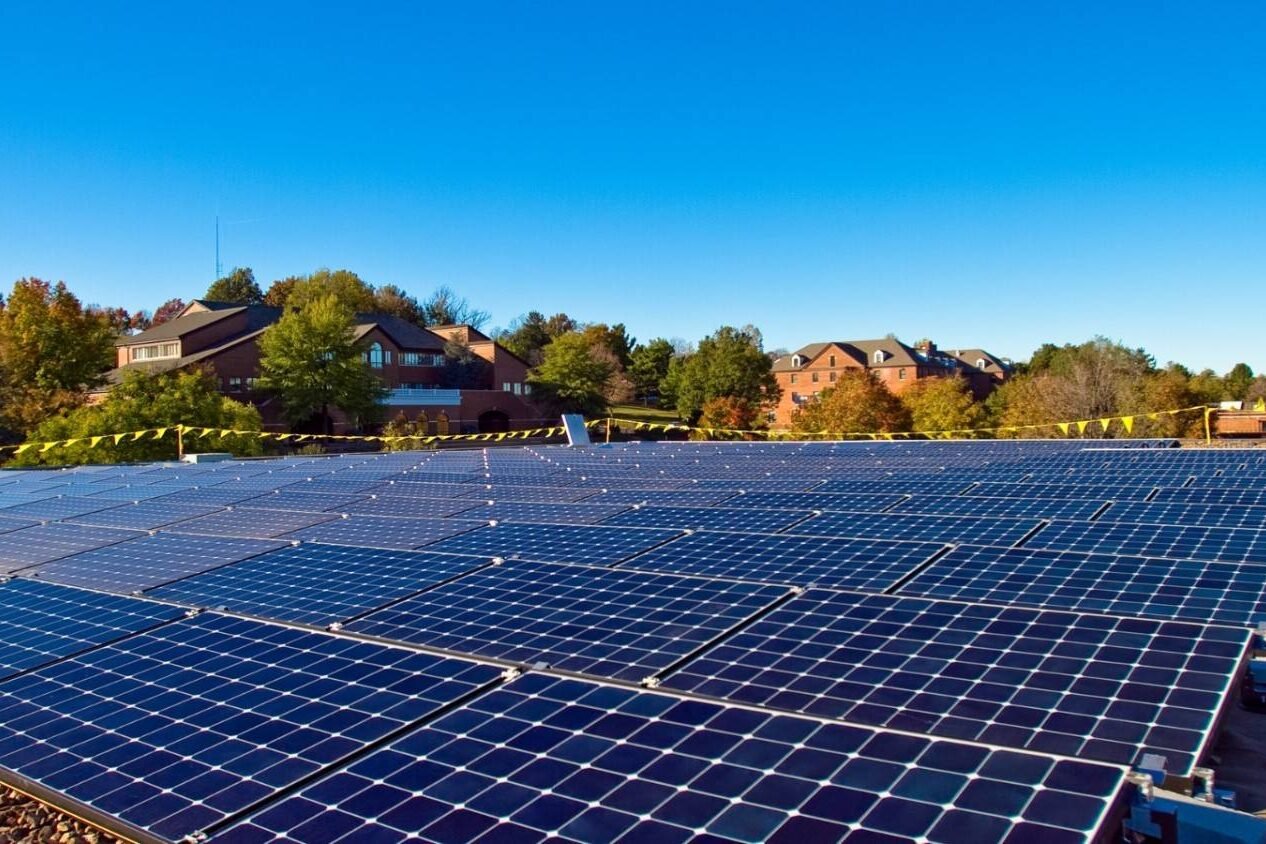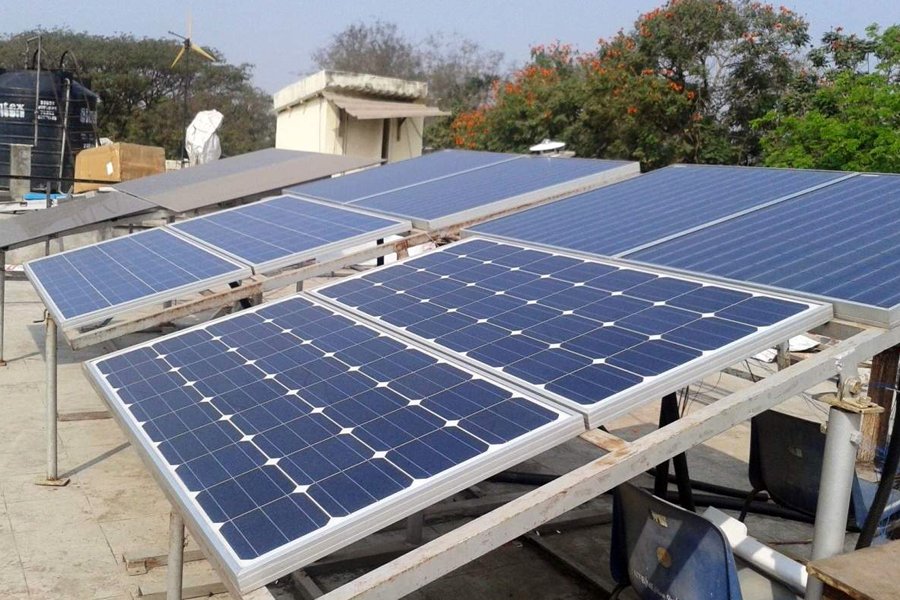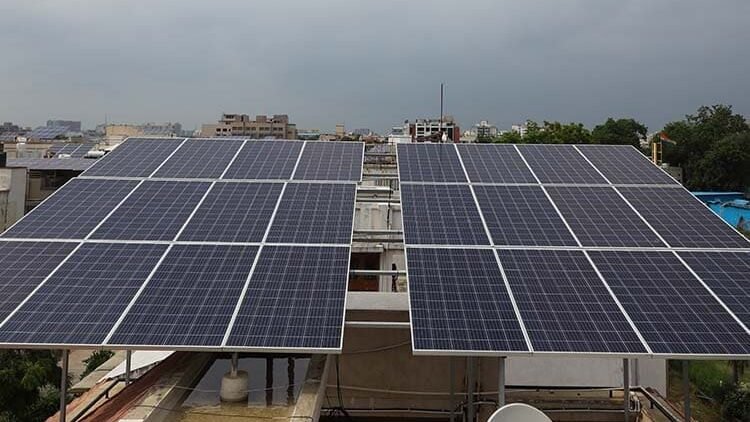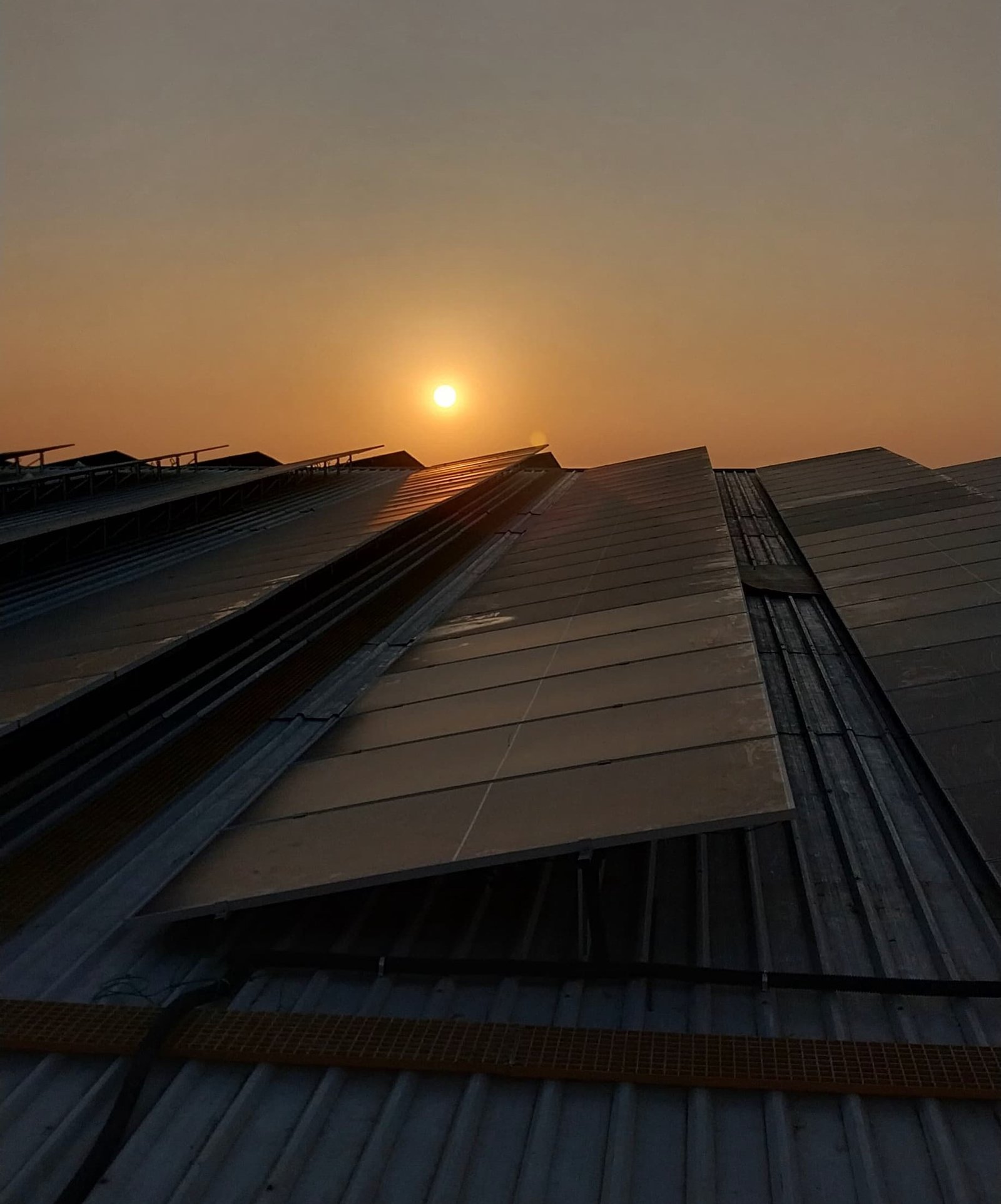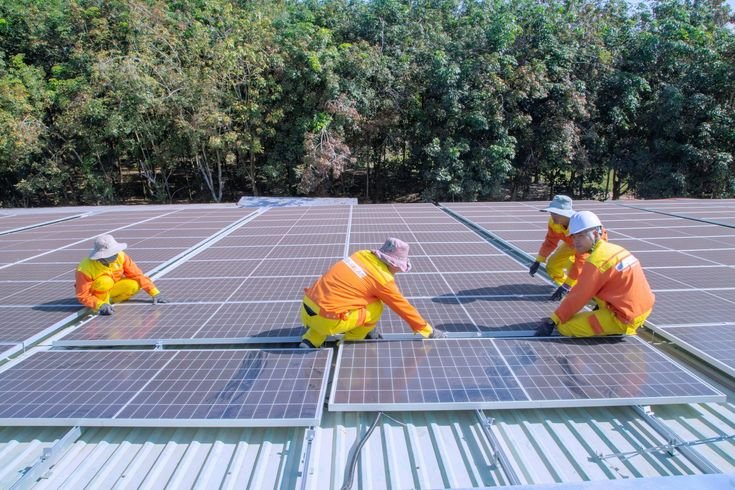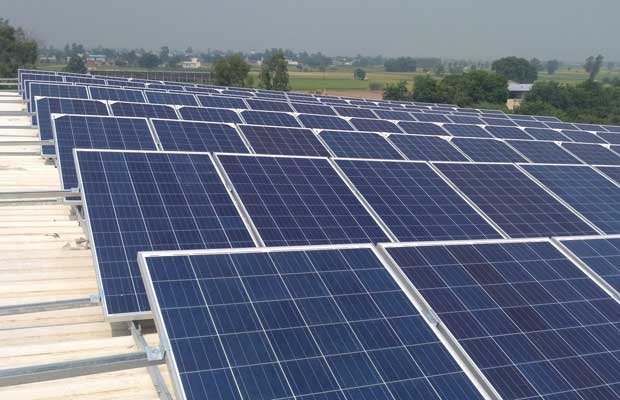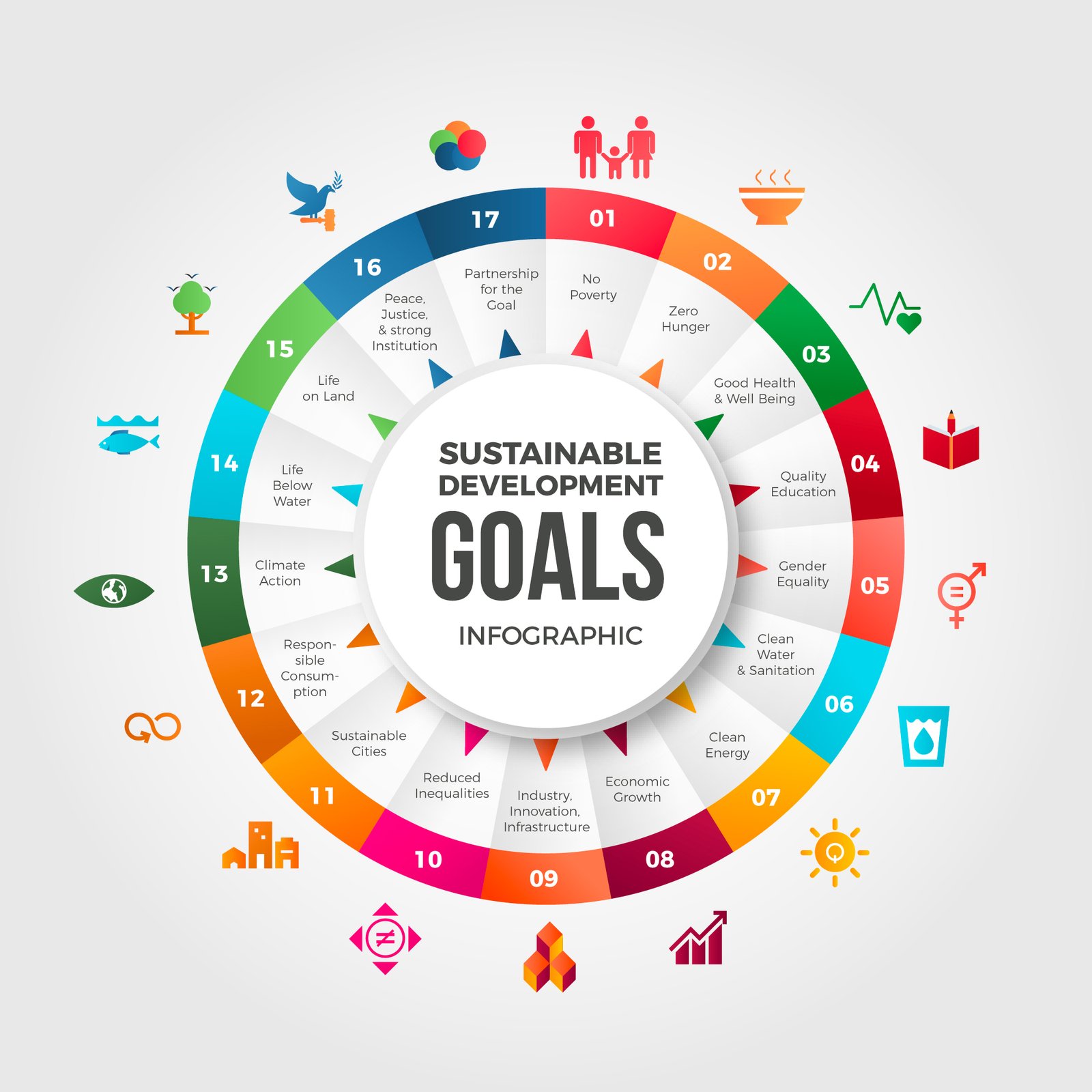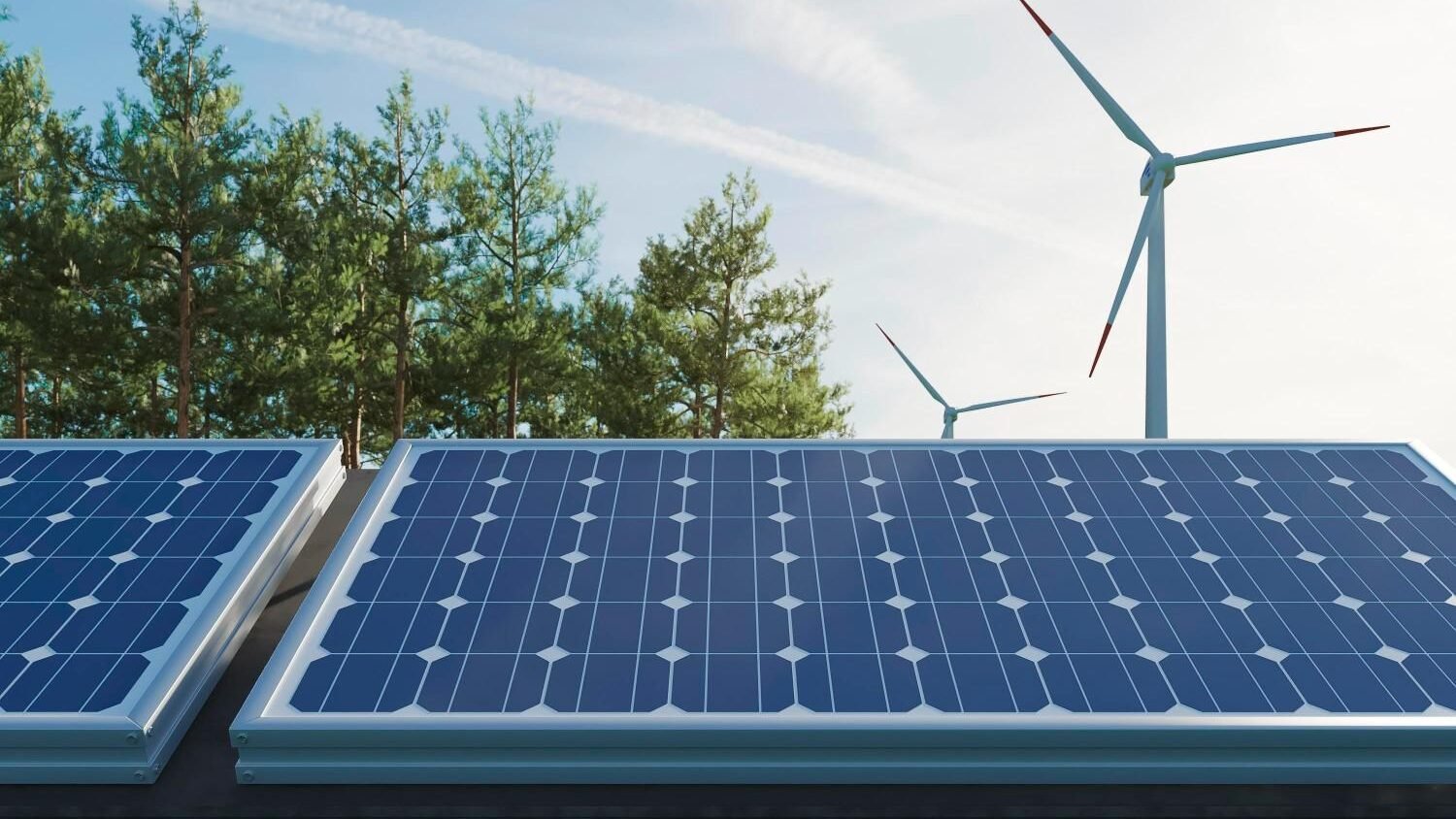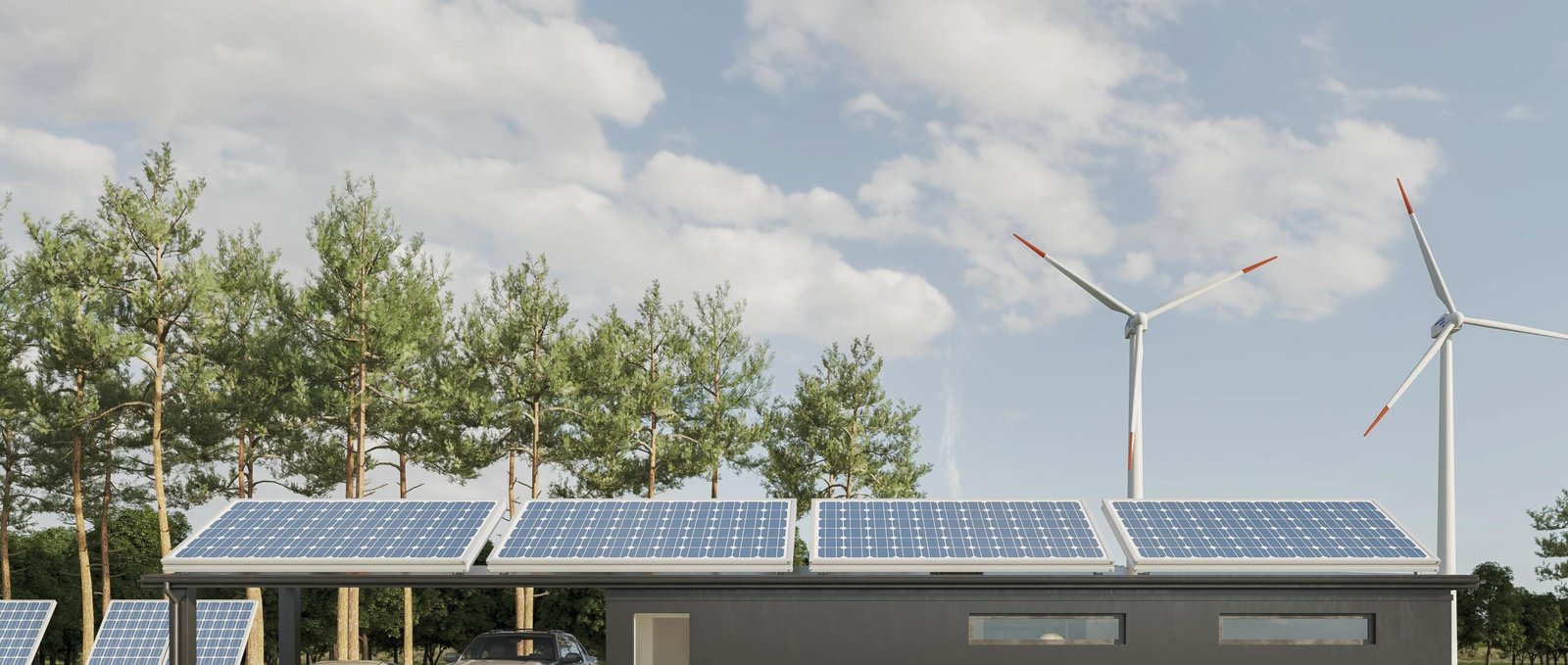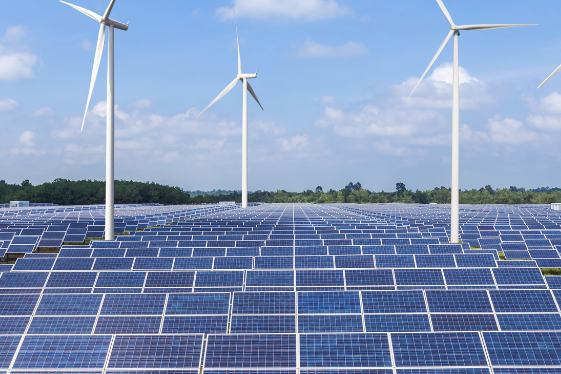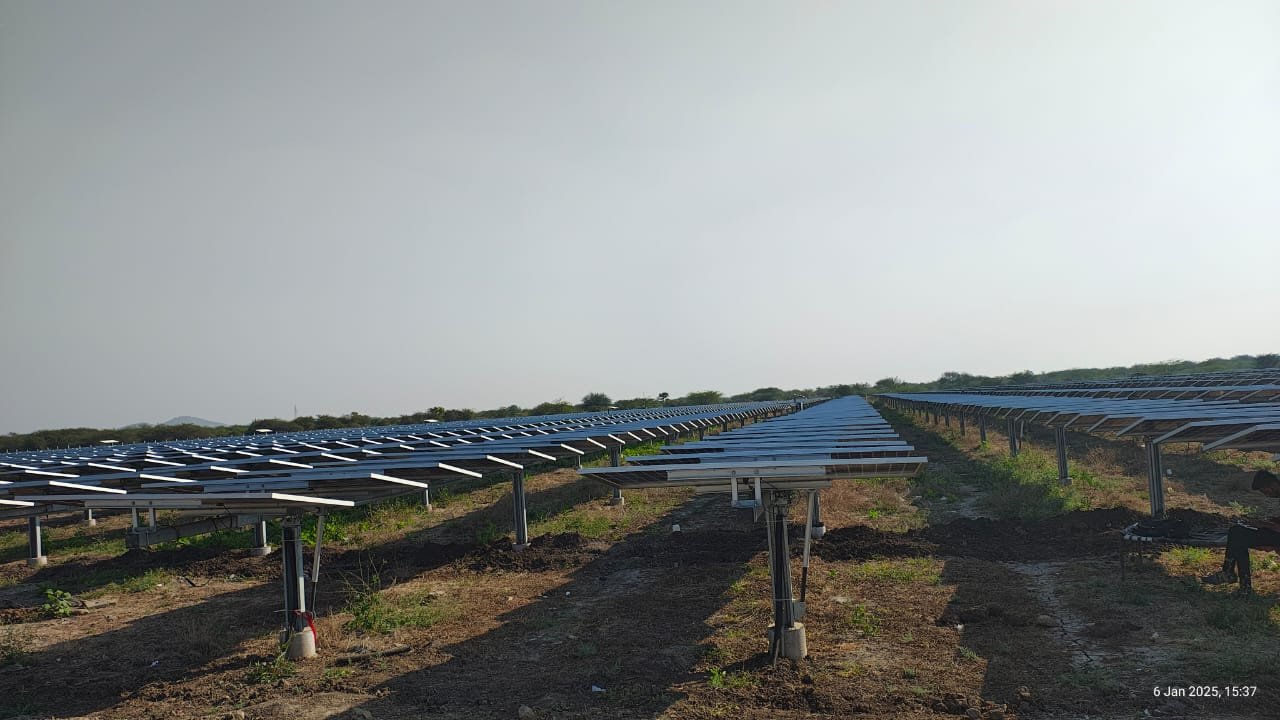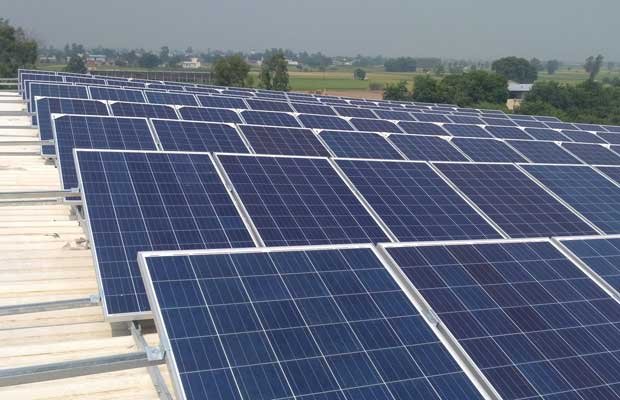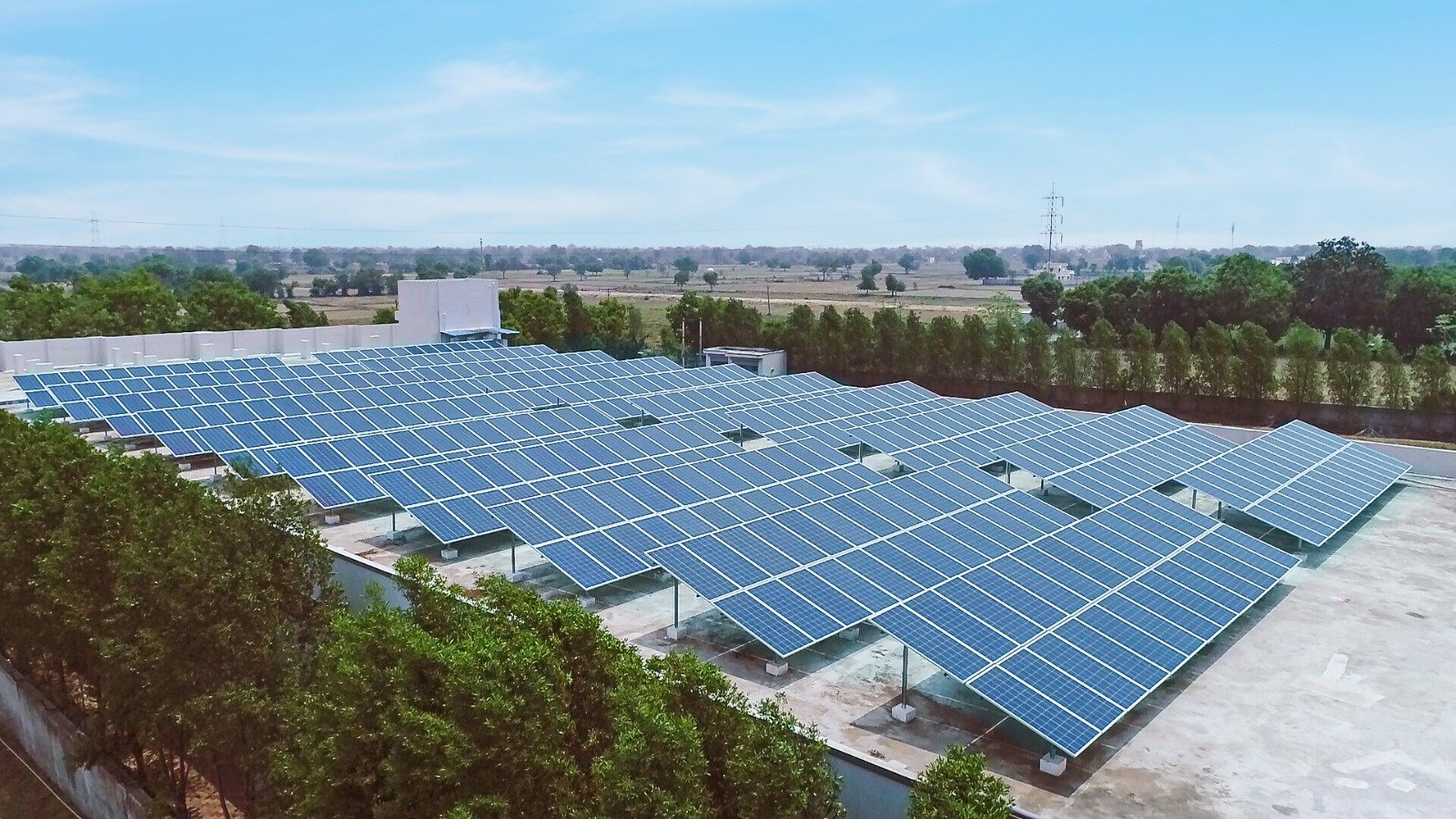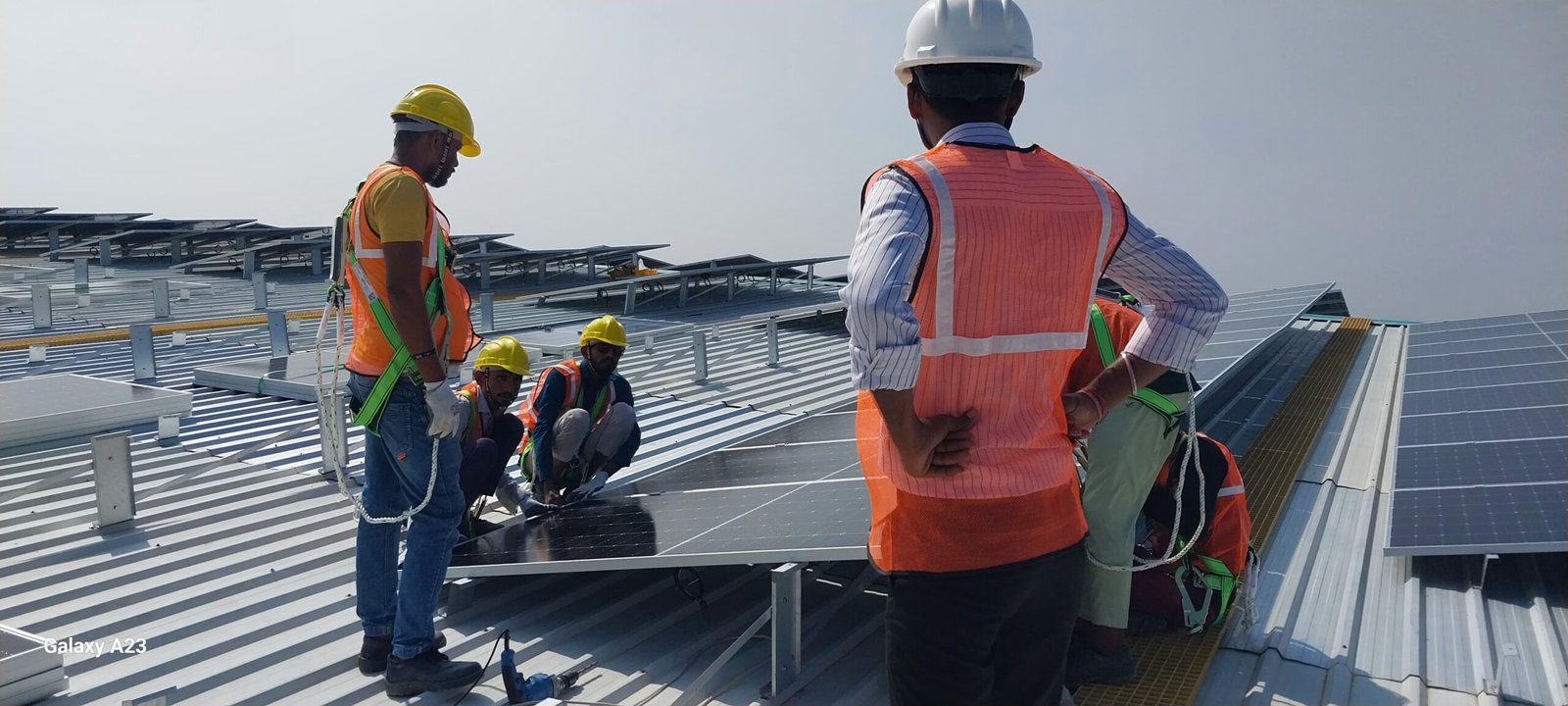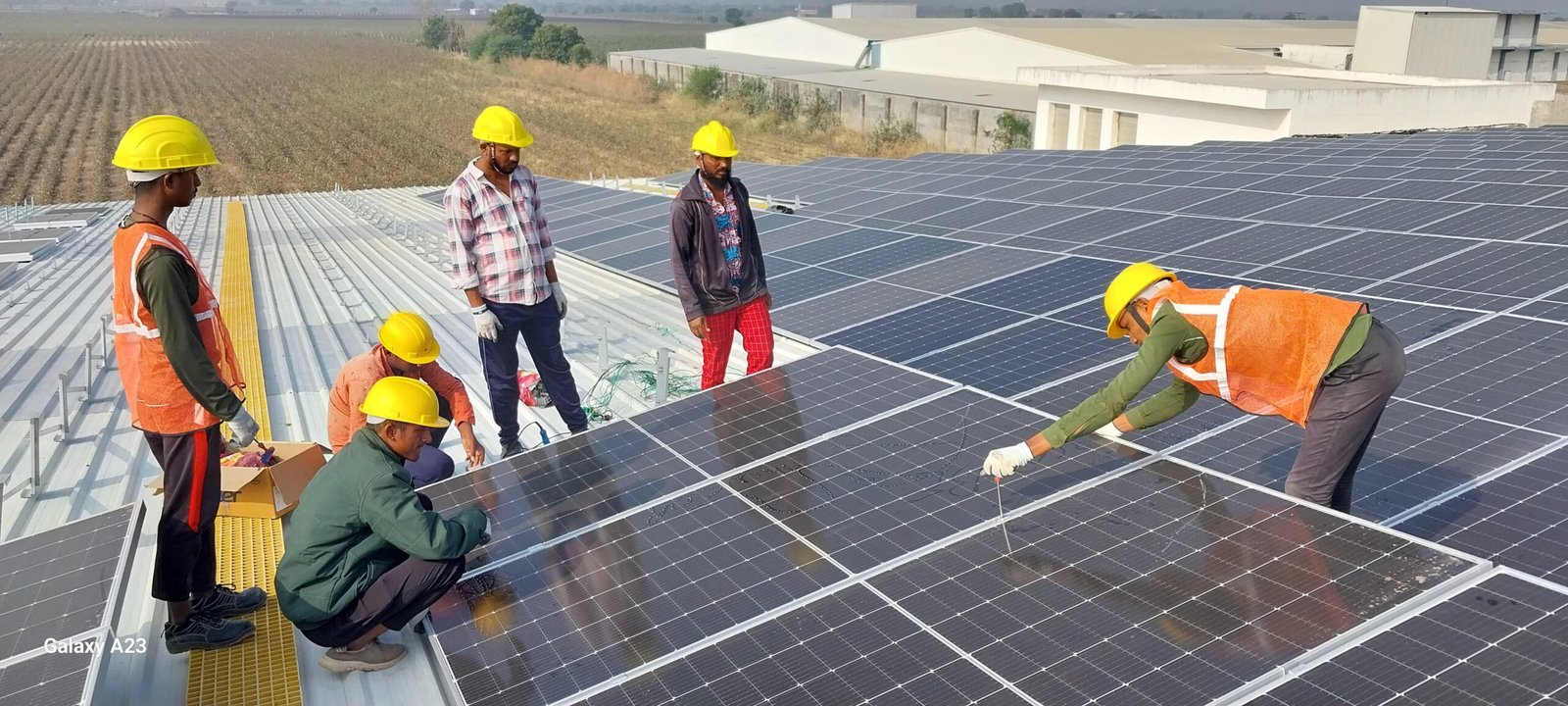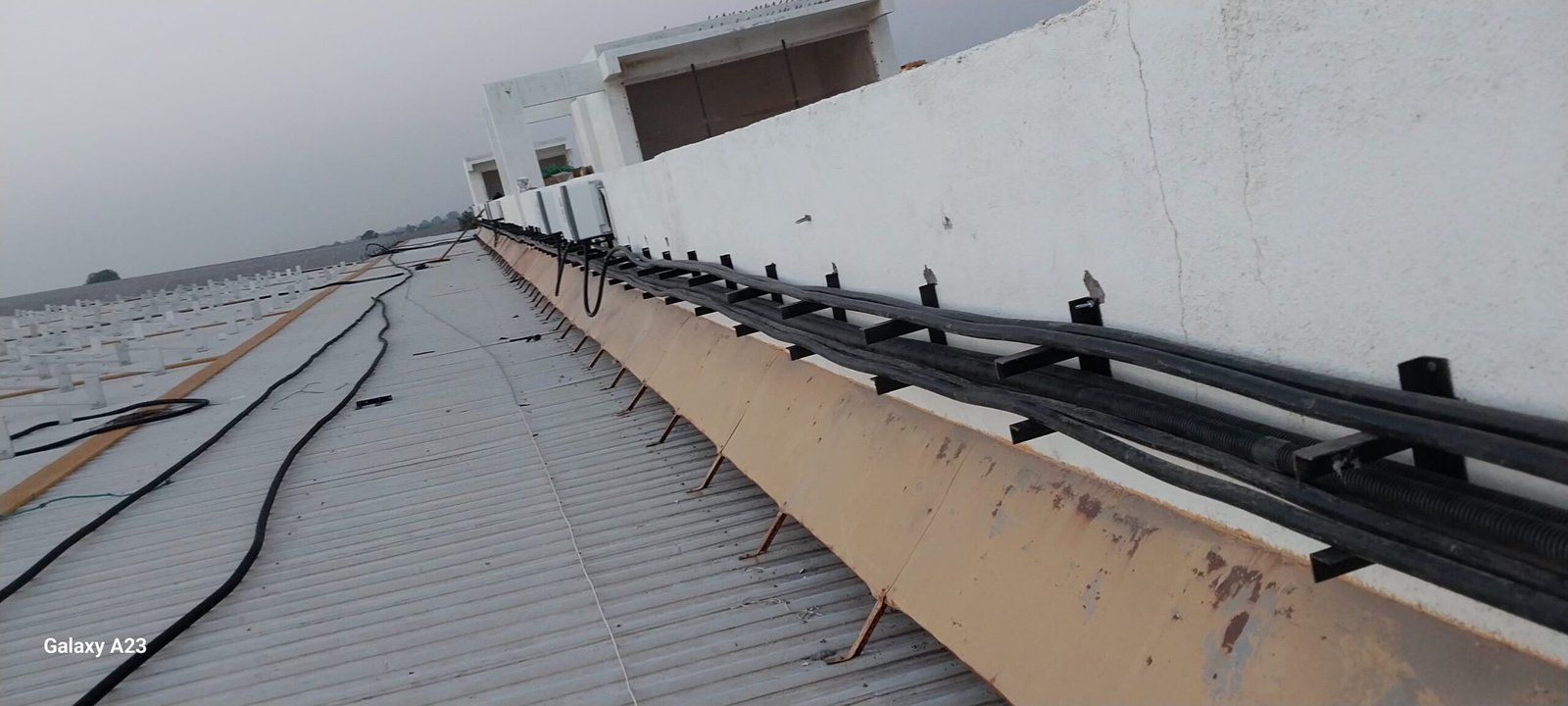India has emerged as one of the world’s leading solar energy development countries. With abundant sunlight and a strong push from the government, the country has seen exponential growth in solar energy projects. The ambitious target of achieving 500 GW of non-fossil fuel-based capacity by 2030 has put solar energy at the forefront of India’s renewable energy revolution. This blog explores the various aspects of solar energy projects in India, including government policies, major projects, challenges, and prospects.
Table of Contents
The Growth of Solar Energy in India
The solar energy projects sector in India has witnessed remarkable progress in the last decade. With the launch of the Jawaharlal Nehru National Solar Mission (JNNSM) in 2010, the government laid the foundation for large-scale solar deployment.
The country’s installed solar power capacity has seen a significant increase, rising from a mere 2.5 GW in 2014 to approximately 94.16 GW by November 2024. This 30-fold growth underscores India’s dedication to harnessing solar energy.
Key Statistics:
- India ranks among the top five countries globally in terms of solar capacity.
- As of 2023, India has installed over 70 GW of solar power.
- The country aims to reach 280 GW of installed solar capacity by 2030.
- The cost of solar power generation has decreased by nearly 80% in the last decade.
Major Solar Energy Projects in India
There are more than 40 Major biggest solar power plants in India, which generate at least 10 MW of power. Below-table is the list of 10 major solar power parks in India:
Bhadla Solar Park
Bhadla Solar Park is a 2.25GW solar energy projects located in Bhadla village, Jodhpur district, Rajasthan. Developed in four phases, the first two are led by Rajasthan Solar Park Development Company, phase three is by Saurya Urja, and phase four is by Adani Renewable Energy. With a total investment of Rs 98.5bn ($1.4bn), construction began in 2015, and all phases were completed by 2019. The solar park covers 5,783ha and is part of the MNRE scheme. Power evacuation is handled by Powergrid and TRANSCO, while financing is supported by ADB and RETIP. Major contractors include Rays Power, Vikram Solar, and L&T.

Pavagada Solar Park
Pavagada Solar Park, or Shakti Sthala, is a 2GW solar complex in Tumkur district, Karnataka, located about 180km from Bengaluru. Developed by Karnataka Solar Power Development Corporation Ltd. (KSPDCL) with an investment of Rs16.5bn ($2.5bn), it became fully operational in December 2019 with the commissioning of the last 100MW by SB Energy. The park spans 13,000 acres and is designed to reduce carbon emissions by approximately 578,631 tons annually.
It consists of eight sections, each with a capacity of 250MW, using fixed-tilted photovoltaic panels from Canadian Solar and First Solar. Power is transmitted through 220kV/66kV or 220kV/33kV substations, stepping up to 400kV at the Power Grid Corporation substation. The project aligns with India’s solar energy goals and Karnataka’s Solar Policy 2014-2021.

Kurnool Ultra Mega Solar Park
The Kurnool Ultra Mega Solar Park, an initiative under India’s solar energy projects program, has a capacity of 1,000 MW, making it part of the government’s push for large-scale solar energy projects. Developed by the Andhra Pradesh Solar Power Corporation Pvt Ltd (APSPCL), it features a partnership between state and central governments, with major stakeholders including the Solar Energy Corporation of India and APGENCO. Over 9 square miles of land were acquired for the project, which also established a local development fund to improve village infrastructure.
The park created over 2,500 jobs, prioritizing local skilled labor, and includes a skill development center for training workers. By October 2017, it generated over 800 million units of energy and saved more than 700,000 tons of carbon dioxide. Its water needs are met through a rainwater harvesting reservoir, demonstrating innovative sustainability practices. Key developers include GreenKo (500 MW), Soft Bank Energy (350 MW), Azure Power (100 MW), and Adani (50 MW).

NP Kunta Ultra Mega Solar Park
The 1,500 MW NP Kunta Ultra Mega Solar Park spans 11,000 acres in Ananthapuramu district and began operations in 2016. It is a joint venture involving Andhra Pradesh Solar Power Corporation, Power Grid Corporation of India, and other local entities, which acquired land from farmers to lease to five private power generators, including Tata Power and Azure Power. Farmers protested against receiving less compensation than the promised INR 2.1 lakh per acre, disrupting construction of the solar plants.
In June 2018, farmers sought compensation for landholders affected by the project, leading to some payments but leaving others unsatisfied. Since June 2019, project work has stalled due to ongoing disputes over compensation. In March 2020, the Andhra Pradesh government announced plans for three new solar parks on non-cultivated land in Ananthapuramu to address the protests. It remains unclear whether these are entirely new projects or a relocation of the existing NP Kunta solar park.

Rewa Ultra Mega Solar
Rewa Ultra Mega Solar Limited (RUMSL), established in 2015, is a joint venture between Madhya Pradesh Urja Vikas Nigam Limited and the Solar Energy Corporation of India. Recognized by the Ministry of New and Renewable Energy as a Solar Power Park Developer, RUMSL develops large-scale solar parks in Madhya Pradesh under the Ultra Mega Renewable Energy Power Projects scheme. It has successfully commissioned the 750 MW Rewa Solar Project, which began supplying electricity to Madhya Pradesh Power Management Company and Delhi Metro in January 2020.
This project is noted for its innovative structuring and has been recognized with the World Bank Group’s President’s Award. RUMSL is currently working on 1,500 MW solar parks in Agar, Shajapur, and Neemuch, expected to be operational by September 2022, supplying power to Indian Railways. Additional projects in the pipeline include a 600 MW floating solar park, a 1,500 MW Chattarpur solar park, and a 1,400 MW Morena solar park.

Charanka Solar Park
Gujarat Power Corporation Limited (GPCL) serves as the Nodal Agency for developing the “Gujarat Solar Park,” Asia’s largest solar park, aimed at combating climate change and promoting renewable energy. Located in Charanka, Patan district, the park covers 5,384 acres of unused land and features advanced infrastructure, including rainwater harvesting and power evacuation systems.
It has successfully commissioned 730 MW of solar energy projects from 36 developers, with an additional 20 MW projects underway, and can generate 4.2 MW of wind power. Launched on December 30, 2010, and dedicated to the nation on April 19, 2012, the park has significantly reduced solar power costs by 40%, facilitating large-scale development. This innovative initiative showcases GPCL’s capabilities in implementing complex projects quickly and effectively, contributing to India’s transformation into a global solar energy leader.

Kamuthi Solar Power Project
One of the World’s Largest single location solar power project was commissioned by the Adani Group at Kamuthi, in Tamil Nadu, with an investment of around INR 45.5 billion. It spans a vast area of 2,500 acres, equivalent to about 950 Olympic-sized football fields. The massive plant comprises 2.5 million solar modules, 380,00 foundations, 30,000 tonnes of structure, 6000 km of cables, 576 inverters and 154 transformers.
The entire facility was completed within a record eight months by nearly 8,500 dedicated personnel who worked day and night to set up this 648 MW clean energy plant. The Kamuthi plant is now fully operational and connected with the 400 kV substation of Tantransco, powering 265,000 homes in a suitable manner.

Kadapa Ultra Mega Solar Park
Kadapa Ultra Mega Solar Park spans 6,075.24 acres in the Galiveedu mandal of Kadapa district, Andhra Pradesh, and is developed by the Andhra Pradesh Solar Power Corporation Private Limited (APSPCL), a joint venture involving SECI, the Andhra Pradesh Power Generation Corporation, and the New & Renewable Energy Development Corporation of Andhra Pradesh.
The Union Government approved a 1,000 MW solar park in Kadapa in August 2015. NTPC Limited invited bids for developing 250 MW in March 2016 and 650 MW in July 2016. The auction for the initial 250 MW concluded on April 11, 2017, with the contract awarded to the French firm Solairedirect at a record-low tariff of INR 3.15 per kWh. The solar park officially commenced operations on November 20, 2019, showcasing its significant capacity and cost-effectiveness in solar energy generation.

Ultra Mega Solar Power Projects
Solar power projects can be established throughout the country, but scattered developments result in higher costs per MW and increased transmission losses. Smaller capacity projects face significant expenses related to site development, infrastructure, and obtaining necessary clearances, leading to project delays. To address these issues, the “Development of Solar Parks and Ultra-Mega Solar Power Projects” scheme was launched in December 2014, aiming to streamline project implementation.
The initiative includes creating solar parks with common infrastructure, allowing developers to set up projects more easily. Initially targeting 20,000 MW of capacity within five years, the goal was later expanded to 40,000 MW by March 2017, with a completion deadline of 2025-26.
The scheme supports states and UTs in establishing solar parks equipped with essential facilities, ensuring efficient large-scale electricity generation. All states and UTs can benefit, and solar parks are typically 500 MW or larger, although smaller parks are permitted in challenging terrains. Collaboration with state governments, CPSUs, and private entities is essential, with a designated agency, the Solar Power Park Developer (SPPD), overseeing the implementation process.

Mandsaur Solar Farm
250 MW Mandsaur Solar Project has achieved COD in September-2017. 100% power being supplied to Madhya Pradesh Power Management Company Ltd (MPPMCL )from 250 MW Mandsaur project. Evacuation Plan is being divided into 2 phases. Power is being evacuated temporarily through Phase-I connectivity in Suwasra. Phase II work is ongoing which involves providing permanent connectivity of 220 kV transmission line from Suwasra to upcoming 220/400 kV MPPTCL substation in Sitamau, Mandsaur. MPPTCL 220/400 kV substation is expected to be commissioned by March, 2020.

Government Policies Supporting Solar Energy Projects
1. Financial Incentives
The government provides financial incentives, including subsidies and tax benefits, to promote the installation of solar panels. The Solar Energy Corporation of India (SECI) and other bodies manage these incentives to support both large-scale and small-scale solar energy generation.
2. Net Metering Policies
Various states have implemented net metering policies, allowing consumers to generate their own solar power and sell surplus energy back to the grid. This encourages the adoption of rooftop solar systems for solar energy generation in India. The policy aims to achieve a 50% target of RE capacity by 2030.
3. Solar Park Scheme
1.28 cr registrations and 14.84 lakh applications fuel India’s solar energy projects expansion. The PM Surya Ghar: Muft Bijli Yojana is a landmark initiative that was launched by Prime Minister Narendra Modi on Feb 15, 2024. It aims to transform India’s energy landscape by providing free electricity to households.

Challenges in Solar Energy Projects Development in India
India’s rapid expansion in solar energy projects is pivotal for its sustainable development goals. However, the sector faces several challenges that could impede its progress.
1. Land Acquisition
Securing land for large-scale solar energy projects is a significant hurdle. These projects require extensive areas, leading to conflicts with agricultural activities and local communities. For instance, in Maharashtra’s Nandgaon, a 100-megawatt solar plant faced substantial opposition from farmers who viewed the project as an unjust land appropriation.
2. Financing and Investment
Access to affordable financing remains a considerable barrier for solar energy projects. High upfront costs and perceived risks deter investors, and many distribution companies (DISCOMs), burdened by debt, struggle to pay for solar power, further discouraging investment.
3. Grid Integration
Integrating solar energy projects into the existing grid presents challenges related to stability and intermittency. The variable nature of solar energy can lead to grid imbalances, necessitating advanced infrastructure and management systems to ensure reliability.
4. Supply Chain Dependence
India’s reliance on imported solar components, particularly from China, poses risks to the supply chain. Efforts to bolster domestic manufacturing are underway, but challenges persist in achieving cost-competitiveness and quality standards.
5. Skilled Workforce Shortage
A deficit of skilled labor hampers the development of solar energy projects. Inadequate training programs and limited government funding contribute to project delays and increased costs, threatening India’s clean energy objectives.
6. Water Scarcity
Regular cleaning of solar panels is essential for maintaining efficiency, but in water-scarce regions, this becomes a significant challenge. Balancing the need for water conservation with the operational demands of solar installations requires innovative solutions.
7. Regulatory and Policy Challenges
Navigating complex regulatory frameworks and obtaining necessary approvals can delay the execution of solar energy projects. Streamlining processes and ensuring policy stability are crucial for attracting investment and facilitating timely project completion.
The Future of Solar Energy Projects in India
India’s commitment to renewable energy, backed by favorable policies and investment, suggests a promising future for solar energy projects. Key trends include:
- Increased Solar Panel Efficiency: Advancements in photovoltaic technology are expected to improve efficiency and reduce costs.
- Hybrid Solar-Wind Projects: Combining solar and wind energy to ensure a more stable power supply.
- Rooftop Solar Growth: Increased adoption of rooftop solar panels for residential and commercial use.
- Battery Storage Innovations: Development of cost-effective battery storage solutions to address intermittency issues.
Conclusion
India’s solar energy projects are driving the country toward a sustainable and energy-secure future. With government support, technological advancements, and increasing private sector participation, India is well on its way to becoming a global leader in solar energy. The continued expansion of solar energy projects will play a crucial role in meeting the country’s energy demands while reducing its carbon footprint.
